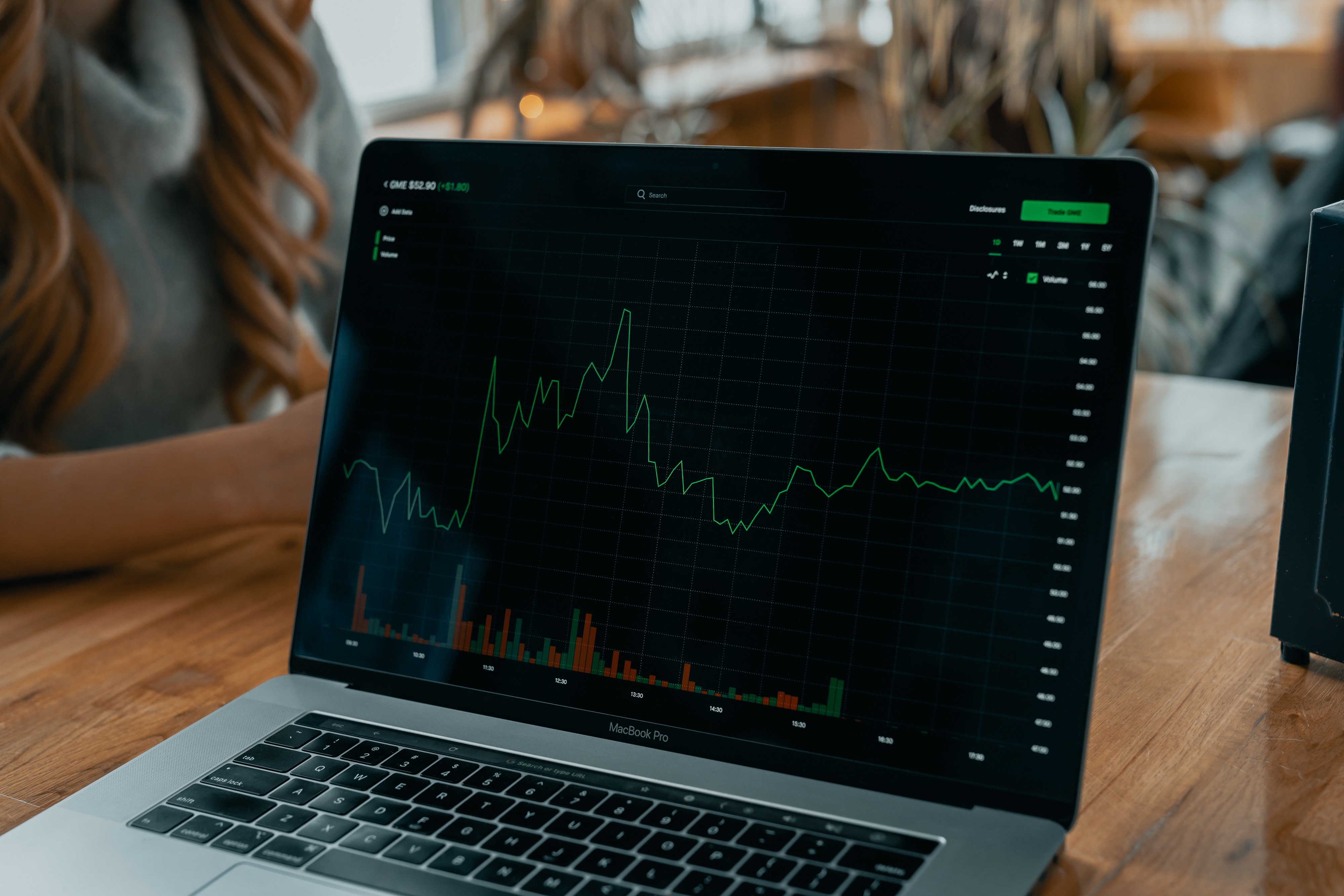Forex Signals: What Are They, Rankings & Benefits

In the vast landscape of the foreign exchange market, forex signals have emerged as vital tools for both beginner traders and seasoned professionals. But what are they? In this article, we will delve into the intricacies of using forex signals, from the definition and understanding how a signal provider works, to evaluating the efficiency of signal services, in order to help you navigate the world of forex trading signals more adeptly.
Table of Contents
What are Forex Signals: Definition and Meaning
How do forex signals work?
When Do Forex Trading Signals Not Work?
Types of Forex Signals
Understanding of Free Forex Signals
Understanding of Automatic signals
What are Long/Short Term Signals?
Who Sends Forex Signals?
How to Choose the Best Signal Provider Sites
How do Forex Signal Providers Work?
Forex Signals Providers VS. Expert Advisors
How to Use Forex Signals: Step-by-Step Guide
Conclusion
FAQ
What Are Forex Signals: Definition and Meaning
The term "forex signals," at its core, represents a number of mathematical predictions, generated from historical price action and volume data, that help to forecast future price movements in the forex market. These signals, backed by both artificial intelligence and various algorithms, provide valuable insights into potential entry and exit points for trades, pointing out when it might be profitable for a trader to make a move.
Typically, these forex signals are offered by a variety of sources such as brokers, market analysts, and professional traders. Their delivery can range from email alerts and SMSs to desktop notifications, catering to both novice traders and experts alike. The most important point is that these signals bring to the table a blend of fundamental and technical analysis, with the former focusing on global news and events affecting the FX markets, and the latter diving deep into chart patterns and price movements.
How Do Forex Signals Work?
Navigating the volatile landscape of the forex market can be daunting, especially without the right guidance. That's where forex signals come into play. But how do they work?
Simply put, forex signals offer traders advice on when to buy or sell within the forex market. They can originate from two primary sources: human experts or automated systems.
-
Human experts rely on their years of experience, analytical skills, and intuition.
- Automated systems, or "forex robots," crunch vast amounts of data using algorithms to produce signals.
The choice between human and automated signals is largely dependent on a trader's personal preference. Some appreciate a human touch and subjective assessment, while others prefer the speed and detachment of machines.
Once a trader receives a signal, the decision to act rests with them. Some might jump in immediately, trusting the source implicitly. Others might use the signal as a piece of a larger puzzle, incorporating it into their broader trading strategy. It's essential to remember that no signal guarantees a profit; they are tools to aid decision-making, not a surefire ticket to success.
Most forex signal providers operate on a subscription basis. After subscribing, traders receive signals via various methods, including SMS, email, or directly through a trading platform. The frequency and specificity of these signals can vary. Some might offer detailed insights with charts and analyses, while others provide more concise recommendations.
When Do Forex Trading Signals Not Work?
Forex signals services are helpful for traders, but they're not always accurate. So, when might they fall short?
-
Influence of various factors on the forex market. The FX market is affected by numerous external factors such as global political events and sudden economic shifts. This unpredictability means that even well-researched signals can become irrelevant quickly if unexpected news impacts the market.
- Reliability of free vs. paid forex signals. Not all forex signals are created equal. Free signals might not be as reliable as those that are paid for. This variability in quality is due to the vast range of signal providers on the market.
- Importance of timely action on signals. The efficiency of a forex signal can be undermined if there's a delay in its delivery or if the trader doesn't act on it swiftly. This underscores the significance of selecting top-notch forex signal providers and the necessity of having a reliable forex signal ranking system.
- Beginner traders' overreliance on signals. Newbies might overly depend on forex signals without grasping the bigger market picture. This lack of broader understanding can lead to undesirable trading results.
While considered as valuable tools, it would be a mistake to believe in sure forex signals. It's necessary to incorporate them into a wider trading strategy and always be aware of the inherent risks present in the constantly changing forex market landscape.
Types of Forex Signals
)
Let's dive into the primary types of forex signals.
1. Manual vs. Automated Signals:
Manual Signals are generated by human analysts, often seasoned professionals from the best forex signal providers. They rely on a blend of technical analysis, fundamental insights, and market intuition to predict potential price shifts.
Automated Signals are driven by algorithms or specific software that scours the forex market for patterns and trends. They are less subjective and can process vast amounts of data quickly, but might lack the human intuition that sometimes proves vital.
2. Free vs. Paid Signals:
Free forex signals are ideal for beginner traders or those testing the waters; these signals can offer basic insights. However, they might not always provide the depth or timeliness that some traders seek.
Paid forex signals are often more comprehensive and timely. They come with a price but promise a level of analysis and precision, often backed by reputed forex signal providers or forex trading signal services.
Understanding Free Forex Signals
Free forex signals have gained popularity, especially among beginner traders and those looking to understand the intricacies of the market without hefty investments. But what exactly are free forex signals, and how do they differ from their paid counterparts?
Free forex signals, as the name suggests, are trading signals provided without a cost. Here are some of their main features and considerations:
-
Accessibility. One of the primary benefits of free forex signals is that they are readily accessible. Many forex signal providers offer them as entry signals for novice traders to familiarize themselves with the market dynamics.
- Sources. These signals can come from a myriad of sources, including websites, seasoned traders sharing insights on forums, or automated software. However, it's crucial to remember that since they are free, they might not always offer the depth of analysis that paid signals do.
- Use with caution. While free forex signals can be a boon, especially when starting out, traders must use them attentively. It's essential to cross-reference with other market data or signals, considering they might not always rank high in forex signals due to their inherent limitations.
Here's a list of the most popular types of free forex signals:
-
Telegram groups
- WhatsApp groups
- Direct signals from brokers
- Copy trading
- Technical indicators
- Forex Robot
Telegram forex signals

Telegram forex signals are trade suggestions sent directly to traders via the Telegram app. These suggestions often include details like which currency pair to trade, the entry point, stop loss, and potential take-profit levels.
One main advantage is the immediacy of these signals. Telegram's instant messaging capability ensures that traders receive timely alerts, potentially allowing them to capitalize on fleeting market opportunities.
However, as with any tool in the trading realm, due diligence is essential. While some signal providers have seasoned experts behind them, others might not maintain the same level of reliability. Traders must, therefore, critically assess the source of these signals to ensure they align with their own trading strategy and risk appetite.
Understanding of Automatic Signals
For the modern trader, time is of the essence. Sifting through vast amounts of data can be overwhelming. Automatic Forex signals simplify this process, leveraging cutting-edge algorithms to analyze market conditions and highlight potential trading opportunities in real time. These signals offer more than just ease; they embody a fusion of precision and quickness, crucial in the dynamic realm of foreign exchange. However, although these tools are undeniably powerful, they aren't infallible, and thus should be treated with caution to prevent potential risks and losses.
What are Long/Short Term Signals?
Long-term signals, stemming from macroeconomic landscapes, typically have a lead time from a day to weeks or months. Such forex signals not only provide a direction for overarching trends, but also often indicate potential larger pip movements. These sizable shifts, spanning hundreds of pips, can equate to significant profit or loss over extended durations.
On the flip side, short-term signals, driven by intraday charts or sudden news updates, can emerge in a matter of hours or even minutes. They often correspond to smaller pip movements—sometimes as few as 10 to 20 pips. For day traders or those employing high-frequency trading strategies, these rapid pip changes, even if minimal, can add up quickly, given the volume and frequency of trades.
Who Sends Forex Signals?
Forex signals are generated by experienced traders, analysts, or even sophisticated algorithms.
How to Choose the Best Signal Provider Sites
Here's how to pinpoint the best forex signals provider.
-
Track record. Begin by investigating their historical performance. Genuine providers transparently share their success and loss rates.
- Reviews & Feedback. Dive into independent reviews and feedback. Fellow traders' experiences can be a goldmine of information.
- Methodology explanation. Trusted providers will typically explain their signal generation methods, helping you understand the underlying strategy.
- Trial period. The best forex signals providers often offer a trial or demo period. Use this to gauge their reliability without committing.
- Pricing & hidden costs. Transparent pricing without hidden charges is a hallmark of reputable signal providers.
How Do Forex Signal Providers Work?
At the core of a forex signal provider's operation lies the generation of signals, a meticulous process underpinned by detailed market analysis. Employing both fundamental and technical analysis, providers dissect economic indicators, assess geopolitical events, and scrutinize chart patterns to forecast currency movements. Some leverage advanced algorithms and machine learning, enabling the swift processing of vast datasets and ensuring real-time signal accuracy.
The main goal of signal providers is to guide traders on when to act, categorizing signals into statuses like Active, Get Ready, and Closed, ensuring traders have a clear directive. Once generated, forex signals are swiftly disseminated to traders through various methods, such as SMS, email, or dedicated applications. Timeliness is crucial; the rapid delivery of signals enables traders to capitalize on currency price shifts promptly, ensuring they remain ahead of the market curve and safeguard their investment positions.
Forex traders, equipped with these signals, must then integrate them into their trading strategies, aligning signal insights with their risk tolerance and financial goals. Recognizing the inherently volatile nature of forex markets, traders employ signals as valuable tools for risk mitigation, optimizing trade timing, and enhancing overall portfolio performance.
Forex Signal Providers vs. Expert Advisors
Forex signals providers are entities or individuals that deliver real-time trade suggestions, typically based on detailed market analysis. These signals, encompassing entry, exit, and stop-loss points, are intended to help traders make more informed decisions, thereby reducing the element of uncertainty. Many traders opt for signal providers as they offer human insight, which can be particularly beneficial during market fluctuations.
On the other hand, Expert Advisors (EAs) are automated trading systems developed to operate on trading platforms, primarily MetaTrader 4 and 5. EAs execute trades autonomously based on predefined criteria and algorithms, eliminating the need for manual intervention. They are favored for their ability to handle high-frequency trading and to operate efficiently in volatile markets.
How to Use Forex Signals: Step-by-Step Guide
 alt=)
Forex signals are crucial tools for traders aiming to navigate the volatile currency markets. Essentially, these signals serve as beacons, guiding traders on when to enter or exit trades.
To use FX signals effectively, here are some common steps to follow:
-
Choose the forex signal provider. Ensure the source is credible and the information is accurate.
- Act conscientiously. Once a trustworthy provider is selected, traders must then act swiftly on the signals received, entering or exiting positions accordingly, while managing risk through stop-loss and take-profit orders.
- Analyze. Regularly analyzing the outcome of trades based on these signals is equally important, as it helps traders refine their strategies and adapt to ever-changing market conditions.
Moving Average Convergence Divergence (MACD)
The MACD is a trend-following momentum indicator, revealing the connection between two moving averages of a currency's price. It assists traders in identifying potential buy and sell signals, offering insights into shifts in the market's momentum and direction.
Moving Averages (MAs)
Moving averages are foundational in forex trading. By smoothing out price data to create a single flowing line, MAs help traders identify the direction of the trend and potential market entry points, fostering a clearer understanding of market dynamics.
Bollinger Bands (BB)
Bollinger Bands encompass a currency price's moving average, typically over 20 days, with outer bands representing standard deviation movements. This indicator aids traders in identifying overbought or oversold markets, providing critical information on price volatility and potential reversals.
Directional Movement Indicator (DMI)
DMI is invaluable for evaluating trends' strength and direction. Comprising the ADX line to assess trend strength and two directional movement lines identifying trend direction, DMI is vital for traders seeking optimal entry and exit points, thereby fostering more strategic trading maneuvers.
Historical Volatility
Historical volatility gauges currency price variations over a defined period. Offering a statistical perspective of market dispersion, this indicator enables traders to forecast future volatility and refine their strategies accordingly. Its role in anticipating market shifts makes it a quintessential element in a trader’s portfolio.
Oscillators
Oscillators are essential for traders focusing on identifying market extremes. These dynamic indicators fluctuate around a central point, aiding in distinguishing overbought or oversold market conditions. Oscillators signal potential reversal points, providing traders with a nuanced understanding of market dynamics and facilitating informed trading decisions.
Relative Strength Index (RSI)
The RSI, a prominent momentum oscillator, measures the velocity and change of price movements. By evaluating recent gains against losses, it assists traders in detecting overbought or oversold market conditions. The insights provided by the RSI are integral for making well-informed trading decisions and optimizing trading outcomes.
How to Make the Most of Forex Signals
Forex signals are robust instruments that help traders navigate the volatile forex market landscape. But harnessing their full potential requires more than just basic understanding. Here are some tips to consider.
-
Source selection. Sift through various providers to identify credible sources, ensuring accurate and timely information. Diversify sources for reliability.
- Risk management. Employ sensible leverage and set stop-loss orders to mitigate risks. Weigh potential rewards against risks for each trade.
- Continuous learning. Educate yourself on market trends and indicators influencing currency values. Combine personal knowledge with signals for informed decisions.
- Technological leverage. Utilize advanced tools and platforms for efficient trading. Pair automated systems with reliable signals to capitalize on potential opportunities.
- Performance review. Regularly assess trading history to identify patterns and refine strategies. Adapt to evolving market conditions for sustained success.
- Be patient and control your emotions. Remain disciplined, stick to a well-crafted trading plan, and avoid impulsive decisions for long-term success in forex trading.
Conclusion
Forex signals serve as essential tools for traders navigating the dynamic currency markets, offering real-time cues that denote potential trading opportunities. Defined as recommendations for entering a trade on a currency pair, these signals are provided by experienced traders or specialized companies, with several types available, each varying in time frame and analysis methods. When effectively utilized, they can help traders optimize their strategies, recognize profitable entry and exit points, and manage risk, offering a crucial edge in the competitive world of forex trading. However, while forex signals can be invaluable, traders should approach them with caution. The diversity in providers and types of signals means that quality and accuracy can vary significantly, thus requiring thorough research and due diligence.
FAQ
What are forex signals?
Forex signals are guidance tools for novice traders, highlighting optimal trade entry points. Derived from technical analysis, some signals are offered freely by providers, while others come at a cost. It's crucial for beginner traders to choose their forex signals providers wisely.
What are the best forex signals?
The best forex signals, derived from detailed technical analysis, guide traders in the forex market. While many providers offer these signals, the finest balance free and paid services. They help pinpoint ideal trade entry points. Choosing wisely is crucial.
Do forex signals work?
Forex signals, which are trading suggestions for the forex market, can be a valuable tool for traders. Originating from technical analysis or other strategies, they offer insights on potential market moves. However, their effectiveness varies. Some traders find them helpful, but they're not always accurate. Always double-check and don't rely solely on them.
Where do people get signals for forex from?
People often turn to experienced traders and analysts for forex signals. These experts analyze market data, news, and trends to provide timely trading suggestions. Additionally, there are dedicated online platforms and apps that offer regular signal updates based on complex algorithms. It's essential, however, for individuals to do their own research and ensure the credibility of the source before relying on any signals.
How much is a forex signal fee?
The cost of a forex signal service can vary widely depending on various factors. Some providers offer free signals but might make money through spreads or other avenues. Premium or more advanced signals can range from $50 to several hundred dollars a month. Always research and review the credibility of the signal provider before committing to any fee.

)

 alt=)